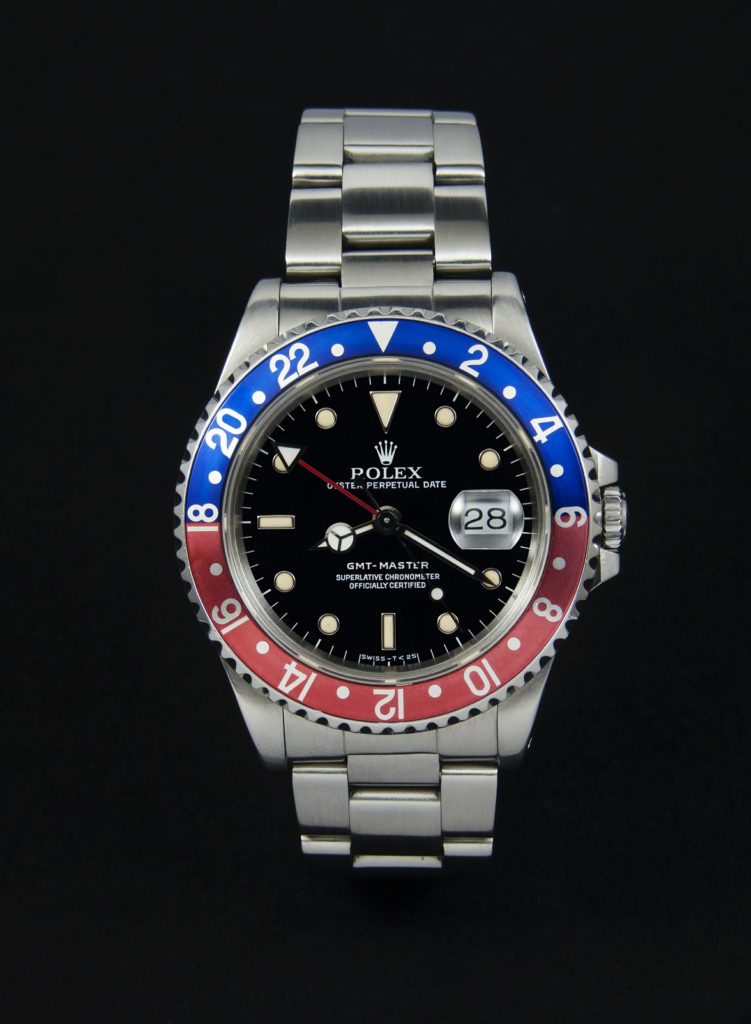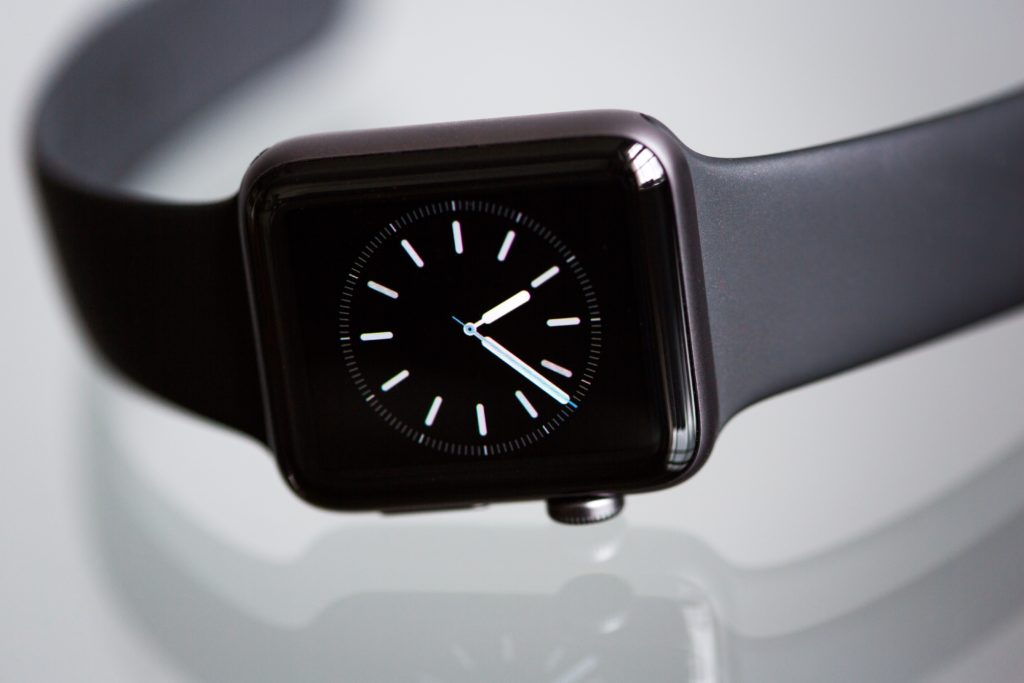Now you can listen to us read this article!
With the popularity of smartphones, laptops, and hand-held gadgets, watches may seem like they’re obsolete. But they can still be found in every department store, and luxury watches are still a thriving industry. Let’s not forget the numerous watch enthusiasts and collectors out there.
Watches are not solely appreciated for their timekeeping function. They have an aesthetic value as well. Furthermore, certain watches are designed for specialized professional and recreational uses. These specialized watches share a key feature: a rotating and specially marked bezel, which sets them apart from most other, commonplace watches. Keep reading to learn more about this fascinating world of specialized watch bezels.
Are Rotating Bezels A Fairly Recent Addition to Watches?
These rotating bezel watches have been around for decades, aiding in:
- Sports
- Research
- Exploration
As we proceed through this article, you will discover the main functions of these rotating bezels – and how to repair one, should your watch need to be repaired. While the smartphone is a remarkable piece of technology, watches have an enduring legacy and can become valuable heirlooms.
A Watch Bezel Will Generally Come In One of Two Forms
When you’re buying a watch, you will usually be looking for a specific set of functions for your watch to perform. If you need a watch that is merely for aesthetic and functional purposes, you will probably choose one with a fixed bezel.
However, watches with a specific purpose, such as an aviator or dive watch, will generally have a rotating bezel to support their intended functionality.
The Fixed Bezel
The fixed bezel, by definition, is the opposite of a rotating bezel. However, it is by far the most common bezel out there. In most non-specialized watches, the bezel is fixed; it does not have a rotating function. Rather, it is decorative or plain. Its only purpose is to hold the transparent crystal piece in place. In some cases, it may be more ornate or decorative to boost the watch’s overall appearance.
This bezel, and many of the types that we describe below, are made with a broad range of materials – including:
- Steel
- Plastic
- Ceramic
It basically functions as the frame of the watch’s casing. But bezels can be made for a variety of uses, some of which we describe below.
The Rotating Bezel
Rotating bezels, in contrast, have additional features, the most common being the chronograph. The chronograph is basically a built-in stopwatch. The markings and type of number scale depend on the purpose of the rotating bezel.
The Slide-Rule Is A Rare and Multi-Functional Bezel
The slide rule bezel is one of the oldest rotating bezels around, as well as one of the lesser-known – among casual watch wearers, anyway. Despite being old and rare, it remains a high-selling timepiece among the most ardent watch enthusiasts in the world. So, what exactly is its function, and how does it work?
The slide-rule bezel is a watch feature that allows you to make various calculations, such as:
- Distance
- Speed
- Logarithms
- Flight times
- Even restaurant tips – as shown by this Crown & Caliber video, which is a brief how-to guide for how to use a classic slide-rule bezel watch
It is essentially an analog calculator.
This bezel is made up of two parts, a stationary ring marked with a set of numbers specific to speed/distance and a rotating outer ring, which is marked with a different set of numbers that support precise calculations.
The Pulsometer is One of the Most Expensive Bezels
As the name suggests, the pulsometer is designed to measure the pulse rate and, in some cases, the respiratory rate of the wearer as well. And, as you have probably already guessed, and according to Watch Ranker, they are designed for use in the hospital room or clinic.
Due to rapid advancements in medical technology, a pulsometer is no longer a primary tool used by doctors or other medical professionals. Nevertheless, watch companies continue to make them for a variety of uses, including personal fitness and health.
The pulsometer has a simple design and function. Typically, the scale, which is calibrated to track 15 or 30 pulses, is located on the periphery of a bezel. The wearer does a simple pulse to heart rate conversion by looking at the watch, as demonstrated here.
The Yacht-Timer Bezel is Used For Racing
The rotating bezel is certainly a versatile feature, which is why it is no surprise that many are designed for a variety of sports and leisure functions. Yachting and regatta racing require precision in timekeeping, which is where the yacht timer comes in.
The countdown timer – from the start of a race – is an essential function of the yacht watch. The most common feature is a marked number scale, from 10 to 1, across a portion of the bezel. These watches are also produced by most top brand names.
Vintage yacht-timers are especially prized among sports watch collectors. These watches date as far back as the 1950s, with many of them featuring rotating bezels. These rotating bezels also allow users to track the time before the start of a race.
Compass Bezels Are A Hikers’ Tool
The compass bezel on a watch may be less cumbersome than carrying around a conventional compass. This bezel is marked with all four directions, with the degree marks in between them. So, as you can imagine, this tends to be a popular tool among avid hikers and climbers.
Unlike a standard compass, the compass bezel is not magnetic, and it is not electronic either. You need a visible sun to use it. While this may not be the most high-tech watch out there, it may be more useful to you than your phone’s GPS for long hikes and climbing adventures – especially if you are beyond cell reception range!
The instructions for using this bezel effectively are slightly more complex than the ones we have covered so far. The Watch Company has laid out these easy steps:
- Align the hour-hand with the direction of the sun (note: the sun rises from east to west)
- Locate the midpoint of the hour hand
- Locate the 12 o’clock position of the dial
- Align the “S” (South) with the midpoint
For more visual learners, you can view a video by Long Island Watch here.
The Telemeter Has a Military Function
The telemeter is one of the more specialized types of rotating bezels. It has typically been used to measure the distance between a person and an object or event. For example, it has been used by the military to gauge the distance of enemy fire or explosions. It is commonly used today by some scientists to calculate the distance of a lightning strike.
It works by initiating the chronograph function once a lightning strike is observed and then stopped once thunder is heard. The scale on the telemeter would indicate the distance of that lightning strike and, ultimately, the current distance of an approaching storm. Here is a very short clip that demonstrates this function.
The Tachymeter Bezel Measures Speed
If you are a race car driver or participate in racing sports, measuring your speed is a big deal. One of the best tools to use for this activity is a tachymeter bezel, which allows you to calculate your speed by measuring the time that has lapsed in one click.
On many tachymeter watches, the scale is inscribed on the bezel, which is usually fixed. However, there are rotating bezels that can help you track the elapsed time, such as the one shown on this diagram by Citizen Watch.
Rotating bezels on a tachymeter watch are seen as an improvement on the overall function of the watch by allowing users to calculate average speeds over longer distances.
The GMT Bezel Tracks World Time
The GMT watch can have a bezel that is fixed or one that rotates. The GMT watch tells time in a 24-hour format. The watch face may have the usually 12-hour increment markings, and the outer, rotating ring of the bezel presents the markings for the 24-hour format.
To track the time in a different time zone, you rotate the outer piece to sync with the different time –rotating it forward or backward, depending on the time zone, of course. Depending on the brand and make, you can track two to three different time zones at once.
The GMT rotating bezel may be especially useful for frequent travelers and people working as part of a remote team.
The Unidirectional Bezel As Used By Divers
The diver’s watch is arguably one of the most distinctive rotating bezel watches out there. Its function, simply put, is to track divers’ time spent underwater. While simple, this device is lifesaving as the oxygen supply is finite, and a human can stay underwater for only so long. This is a feature of analog divers’ watches.
The bezel is rotated to align the 12 o’clock hand with the minute hand. This instrument is famously unidirectional, counterclockwise, in order to shorten the time spent underwater – better safe than sorry! The counterclockwise, unidirectional movement is designed to prevent the bezel from being able to be bumped or moved, which could inadvertently extend the diving time.
The Decimal Bezel Is Another Specialized Item
Last but not least is the decimal bezel. Like its cousin, the tachymeter, it measures time. What differentiates it from the tachymeter is that the user can translate time into decimal values, which is an indispensable feature for scientific and industrial measurements. Because of its industry-specific purpose, it is a rare watch.
The rotating bezel is an increasingly common feature of the decimal watch, allowing for more complex conversions and calculations. Handling complex calculations and conversions is crucial for keeping pace with rapid technological change.
How to Fix A Bezel
Like all wearable items, wear and tear is inevitable. This is especially true of rotating bezels and other movable pieces, which can be worn down with frequent use, get stuck, or loosen over time, affecting the overall functionality of the watch.
Even the most luxurious and reputable brands, such as the slide-rule Breitling Navitimer watch, require maintenance and repairs over time. Ultimately, the type of repair you need depends on the type of bezel.
Repairing a Fixed Bezel
In the case of a fixed bezel, you may notice that it loosens over time. In this case, tightening it in place is the solution, and there are numerous tips and tools at your disposal for doing this. In some cases, a loose bezel can be fixed with a cheap and accessible household item, such as a piece of dental floss – as shown here by Techie’s Hobbies.
How Do I Repair a Rotating Bezel?
Fixing a rotating bezel can be a more involved process. For a specialized brand, the crucial first step to take is to consult the owner’s manual or crowd-sourced repair guides, such as I Fix It, for various repairs and fixes that are applicable to your watch – choose these wisely.
Sometimes a rotating bezel “freezes,” which may then result in a defective or broken spring. In this case, the bezel itself needs to be carefully removed. You need to make sure that you know the different parts of your particular watch and how they work. In addition, you need to have the right tinkering tools.
Long Island Watch has a video on how to repair a “frozen” rotating bezel, in this case, a diver’s watch.
If you are wary of taking your rotating bezel watch apart, you may want to reach out to the manufacturer and have them take it in for a repair or contact a horologist (timepiece expert). This might be the most cost-prohibitive solution, but it prevents you from causing further damage and, in the long run, is worth it.
Conclusion
Rotating bezels have a broad range of applications. While a fixed bezel will suffice for most, watch enthusiasts and collectors will appreciate these specialized, rotating bezel watches as remarkable pieces of technology and, in some cases, history. Keep in mind, however, that most of these watches come with a hefty price tag and require maintenance and care.
Sources:
“How to Use a Slide Rule on a Watch | Breitling Navitimer,” https://www.youtube.com/watch?v=Sy4wusLxTBo
“Breitling Navitimer Repair.” https://www.ifixit.com/Device/Breitling_Navitimer
“A Watch Pulsometer Explained,” Watch Complications. https://www.youtube.com/watch?v=ZQFnh_5lI-E
“How to Use a Watch Bezel: A Complete Guide,” The Watch Company.https://www.thewatchcompany.com/blog/how-to-use-a-watch-bezel-a-complete-guide/
“How to use a Compass Bezel – Watch and Learn #17,” Long Island Watch. https://www.youtube.com/watch?v=PWCxsk0hZRM
“Farer How To – Use A Telemeter Watch Function.” https://www.youtube.com/watch?v=4ntDl3J_MFs
“How to Tighten a Loose Rotating Watch Bezel,” Techie’s Hobbies. https://www.youtube.com/watch?v=9UrSr9YWHQY
https://hiconsumption.com/what-is-a-tachymeter-watch-and-how-to-use-it/
https://www.youtube.com/watch?v=LZTjtUKGPWY







